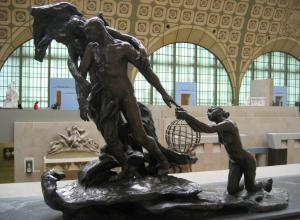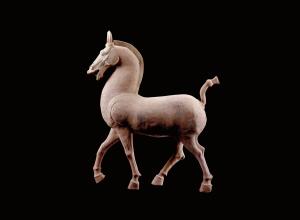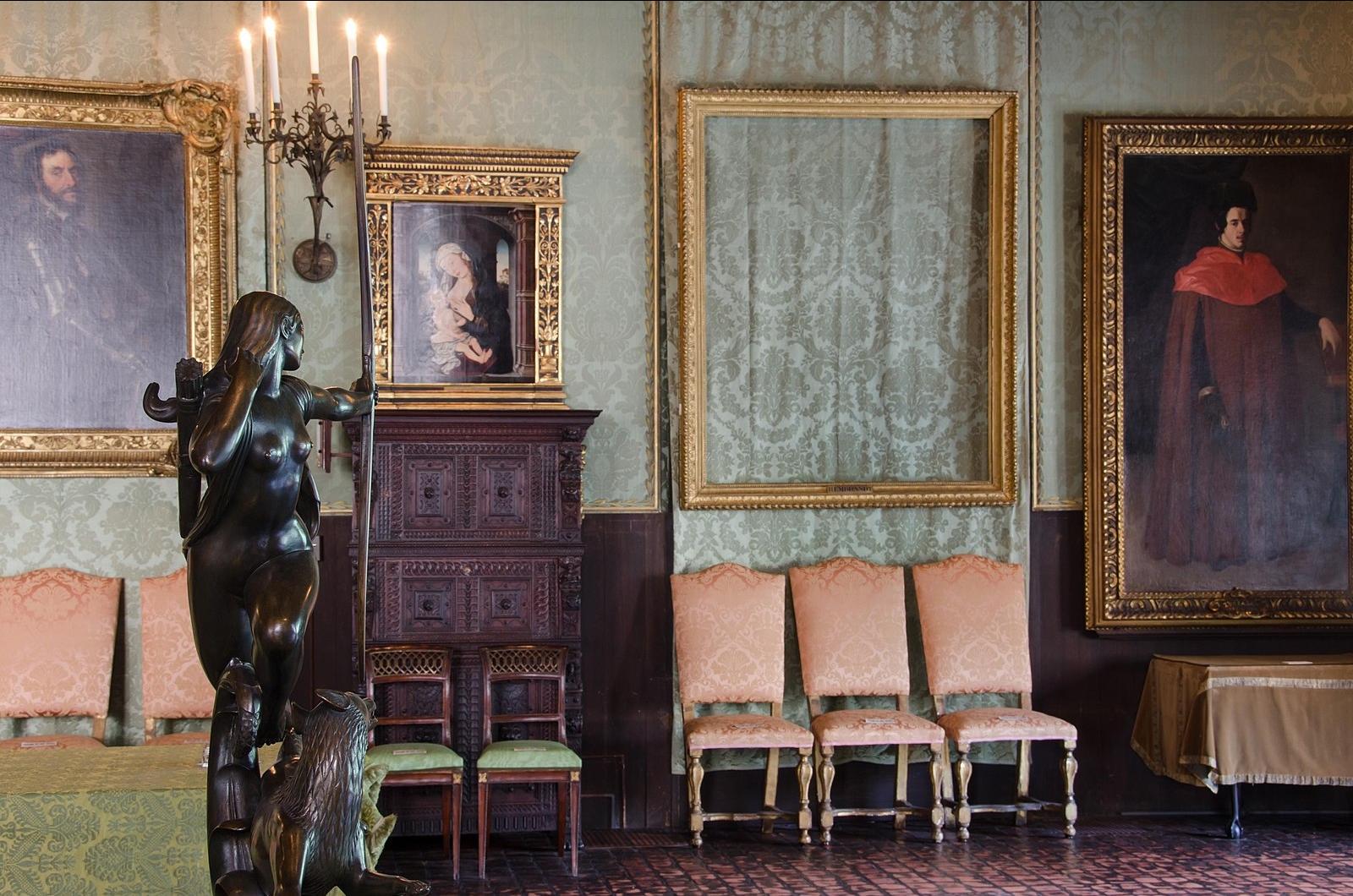
Photo of the empty frame where The Storm on the Sea of Galilee was once displayed at the Isabella Stewart Gardner Museum. March 2018.
The art world has its share of mysteries. From the impressive scale of prehistoric structures, to who exactly posed for enigmatic portraits. Crime, either adjacent to or embedded in the art scene, has also led to countless mysteries. From the secret identity of a certain graffiti artist to suspicious deaths and even unsolved art heists, here are ten intriguing artistic conundrums.
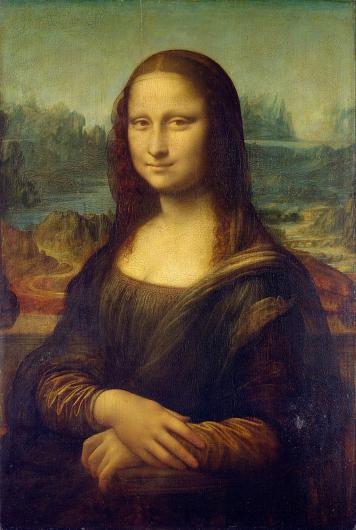
Leonardo da Vinci, Portrait of Mona Lisa del Giocondo, 1503-1506. Louvre, France.
The identity of the iconic lady with the mysterious smile has fascinated people for 500 years. While many historians think Mona Lisa was Italian noble Lisa Gherardini, whose husband commissioned Leonardo to paint her portrait, theorists also imagine Mona Lisa is really Leonardo or his pupil and possible lover, Salaì, in women’s clothes. Others posit the woman could be Leonardo’s mother painted from memory or the art patron Isabella d’Este.

Michelangelo, David, 1501-1504. Marble. Florence, Galleria dell'Accademia.
Michelangelo’s magnificent David sculpture stands with a sling in his left hand, gripping something tightly in his right hand, fingers cupped around an unseen object. Some experts say it’s simply part of the sling. Others believe it’s the stone he’s about to send arching towards Goliath’s head, or it’s part of a fustibal—a specialized staff-sling capable of catapulting stones 600 feet. Whatever he’s holding, David is battle-ready.
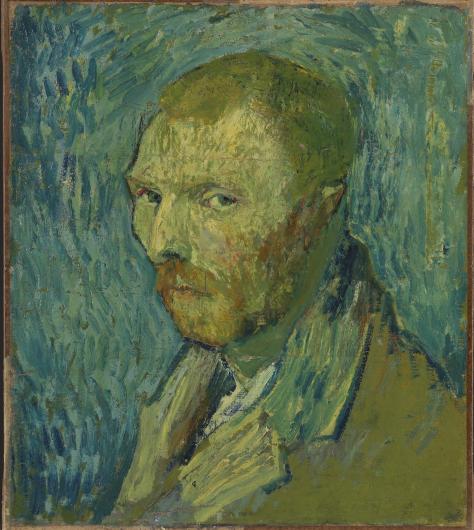
Vincent van Gogh, Self Portrait, September 1889. Oil on canvas. National Museum of Art, Architecture, and Design.
While Van Gogh’s apparent suicide has become cemented in the popular imagination as part of his tortured artist persona, facts about his death don’t add up. In their 2011 book, Pulitzer Prize-winning biographers Steven Naifeh and Gregory White Smith theorized that Van Gogh was accidentally shot in the stomach by a teen boy with a notoriously misfiring gun. Two acclaimed films, Loving Vincent (2017) and At Eternity’s Gate (2018) investigate this theory.

Photo of the empty frame where The Storm on the Sea of Galilee was once displayed at the Isabella Stewart Gardner Museum. March 2018.
The 1990 Gardner Heist is still the most expensive art heist of all time. Two men posing as law enforcement officers stole thirteen masterpieces collectively worth $500 million from Boston’s Isabella Stewart Gardner Museum. The thieves walked off with work by Manet, Rembrandt, Degas, and the most valuable stolen painting in the world: Vermeer's The Concert, last valued at $250 million USD. Despite promising leads, the theft remains unsolved.

Photo of Banksy stencil art, January 2004. Brick Lane, London.
Famous for his visually arresting, anti-establishment stenciled graffiti art, street artist Banksy remains anonymous despite three decades of international fame. Popular identity theories propose Banksy is Massive Attack frontman Robert Del Naja, artist Damien Hirst, artist Robin Gunningham, or a woman-led team of seven artists.

Aerial view of the “Monkey,” one of the most popular geoglyphs of the Nazca Lines, 200 BC - 800 AD. Nazca Desert, Peru.
Only fully visible from the air, or surrounding hillsides, the Nazca Lines make up a uniquely enormous set of ancient earthworks. Carved into approximately 200-square-miles of Peruvian desert, many of these massive geoglyphs depict the outlines of animals and plants. Others are more abstract and fantastical. Created by the Pre-Incan people between 200 BC and 800 AD, most experts agree that the different types of geoglyphs had different purposes—from ritual to astronomical.

Funeral mask also known as Agamemnon Mask, 16th century BC. Gold. National Archeological Museum, Athens.
In his quest to prove the Ancient Greek city he’d unearthed was Troy, nineteenth-century German archaeologist Heinrich Schliemann dubbed this hammered gold funeral mask The Mask of Agamemnon. Further examination proved this impressive artifact actually predates the Trojan War by 300 to 400 years. Who exactly it depicts is still a mystery.
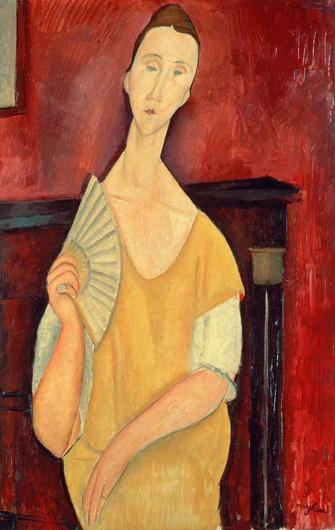
Amedeo Modigliani, Woman with a Fan, 1907-1920.
In 2010, art thief Vjeran Tomic, nicknamed “Spider-Man” for his climbing ability, stole five major artworks by Picasso, Léger, Braque, Matisse, and Modigliani from Paris’s Musée d’Art Moderne. Assessed at $107 million USD, these priceless paintings included Woman with a Fan (1919). The excellent example of Modigliani's signature elongated portraiture style featured in the Bond film Skyfall. While an accomplice confessed to panicking and throwing the artwork away, officials hope this was a lie. The paintings remain at large.

Franz Marc, The Tower of Blue Horses, 1913.
One of German Expressionist Franz Marc’s best works, The Tower of Blue Horses has been missing since 1945. Acquired by the Berlin National Gallery, the painting was confiscated by the Nazis during WWII. Owned briefly by Luftwaffe commander Herman Goering, who appropriated the work for his private collection, the painting is rumored to have escaped destruction numerous times but has yet to be rediscovered.
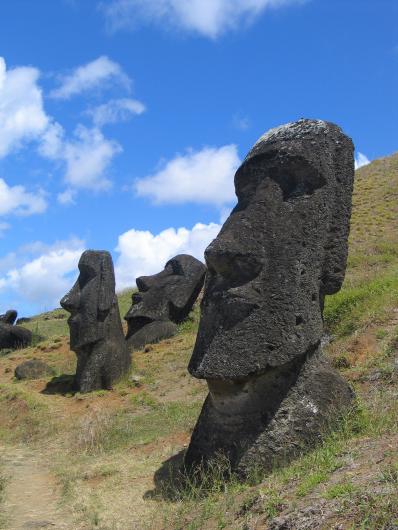
Mo'ai, 10th - 16th century. Rano Raraku, Rapa Nui.
Rapa Nui, an extremely remote Polynesian island off the coast of Chile, also known as Easter Island, is home to over 900 monolithic human figures with oversized heads, called moʻai. These imposing sculptures are carved from soft volcanic rock and tower over the countryside ranging from thirteen to thirty feet tall and weighing in between fourteen and eighty tons. Though their existence initially puzzled archeologists, it is now known that the mo’ai were created by a group of settlers from Eastern Polynesia between the tenth and sixteenth-centuries alongside shrines and a village with a deeply ceremonial culture.
Megan D Robinson
Megan D Robinson writes for Art & Object and the Iowa Source.




